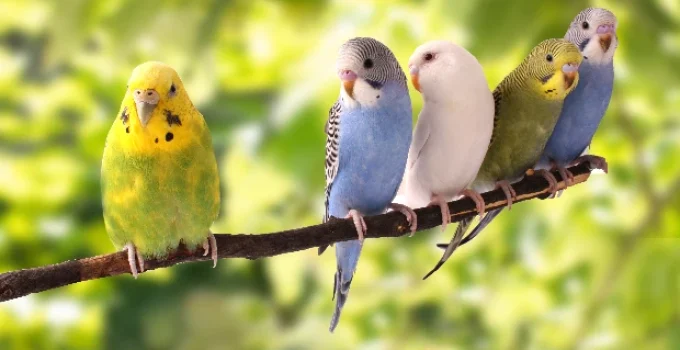Do Birds See in Color?
Yes, birds can see in color—and even more colors than humans can! While our eyes are limited to three types of color receptors, many birds have four. This extra receptor helps them see ultraviolet (UV) light, which is completely invisible to us.
🔎 | According to the American Museum of Natural History, birds have some of the most advanced color vision in the animal kingdom [1].
So what does the world look like to a bird? Much more colorful than it does to us.
🔍 Dive Deeper
- How Bird Eyes Work
- Colors Birds Can See That Humans Can’t
- Why Color Vision Matters for Birds
- Birds with the Best Eyesight
- Fun Fact Table: Bird Vision vs. Human Vision
- 🎯 Final Thoughts
- 📚 References
👁 How Bird Eyes Work
Bird eyes are specially built for sharp focus and broad color vision. Let’s break it down:
- Cone Cells: These are the cells in the retina that detect color.
- Humans have 3 types of cone cells (red, green, blue).
- Birds have 4 types, including one that sees ultraviolet.
- Oil Droplets: Birds also have colored oil droplets in their eyes that filter light and improve color contrast. This gives them better detail when spotting food or mates.
- Eye Shape: Some birds, like hawks and owls, have large eyes with more receptors per square millimeter, which gives them sharp vision even from far away.
🌈 Colors Birds Can See That Humans Can’t
The fourth type of cone lets birds see UV light—a part of the light spectrum that humans can’t detect.
- UV Light Helps Birds:
- Spot markings on feathers invisible to us.
- Find ripe fruit and flowers (some reflect UV).
- Track trails of urine from prey (in raptors).
🐦 For example, many birds of the same species look identical to humans, but under UV light, they look very different to each other—helping with mating and territory.
🐣Why Color Vision Matters for Birds
Birds use color vision for many important survival behaviors:
- Finding Food: Hummingbirds are drawn to bright reds and oranges. Fruit-eating birds can spot colorful berries more easily.
- Choosing Mates: Bright feathers often show health. Males like peacocks or cardinals use their colorful plumage to attract females.
- Camouflage and Warning: Some birds use color to hide, while others use it to warn predators (like the bright blue poison-feathered pitohui).
- Caring for Young: Some bird chicks have UV-reflective beaks to signal they are hungry.
🦅 Birds with the Best Eyesight
Some birds are famous for their powerful vision:
| Bird | Special Vision Ability |
|---|---|
| Hawk | Can spot prey from over 100 feet in the air |
| Pigeon | Can see UV and detect polarized light |
| Hummingbird | Sees UV patterns on flowers for better feeding |
| Kestrel | Tracks UV light trails left by small mammals |
| Owl | Has night vision, not color, but very sharp sight |
Birds rely heavily on their eyes, which is why they’re often bigger (in proportion to body size) than mammals’ eyes. Some birds even have better vision than most modern cameras.
Fun Fact Table: Bird Vision vs. Human Vision
| Feature | Humans | Birds |
|---|---|---|
| Cone Types | 3 (Red, Green, Blue) | 4 (Red, Green, Blue, UV) |
| Sees Ultraviolet? | ❌ No | ✅ Yes |
| Sharpness of Vision | Good | Excellent (in raptors) |
| Detects Polarized Light | ❌ No | ✅ Some species |
| Uses Color to Find Mates | Sometimes | Frequently |
🎯 Final Thoughts
Birds don’t just see in color—they see in super color. Their fourth cone receptor lets them experience the world in a more vivid and detailed way than we can imagine. Whether it’s helping them find a juicy berry, impress a mate, or spot a mouse from the sky, their powerful eyes are one of their greatest tools.
Next time you see a bird perched on a tree, just remember: it might be seeing colors you’ll never get to see!
📚 References
- American Museum of Natural History. (2020). Bird Color Vision. https://www.amnh.org/research
- Ödeen, A., & Håstad, O. (2013). The phylogenetic distribution of ultraviolet sensitivity in birds. BMC Evolutionary Biology, 13(1), 36. https://bmcevolbiol.biomedcentral.com/articles/10.1186/1471-2148-13-36
- National Audubon Society. (2019). Why Birds See More Than We Do. https://www.audubon.org/news/why-birds-see-more-we-do
- Science News for Students. (2018). Birds and UV Vision. https://www.snexplores.org/article/birds-see-hidden-hues
